2015 Global Climate Legislation Study at a glance
The 2015 Global Climate Legislation Study covers 98 countries plus the European Union
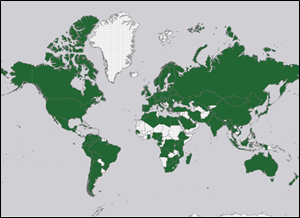
It covers 32+EU developed and 66 developing countries; 31+EU Annex-I and 67 non-Annex-I countries.
Taken together, the study countries produce 93 per cent of world emissions, including 46 of the world’s top 50 emitters. They are home to 90 per cent of the world’s forests.
Since 1997, the number of climate change laws and policies has doubled every 5 years
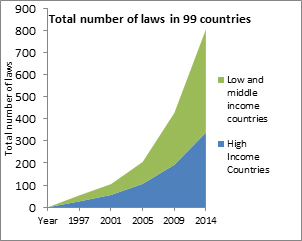
By the end of 2014 there were 804 climate change laws and policies – rising from only 54 laws and policies in 1997, and 426 in 2009 when the Copenhagen Accord was signed.
Approximately half of those (398) were passed by the legislative branch, and half (408) by the executive branch (e.g. policies, decrees).
46 new laws and policies were passed in 2014, compared with 82 in 2013.
75 countries and the EU have framework laws or policies to address mitigation; 64 countries have frameworks for adapting to the impacts of climate change
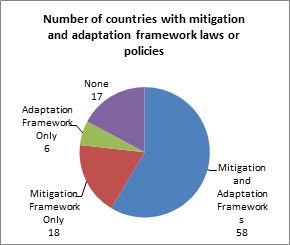
Frameworks have been shown to encourage a strategic approach to climate policy and generate further policy action.
17 countries do not have any climate framework legislation.
Over 75 per cent of global emissions are covered by economy-wide emission reduction targets
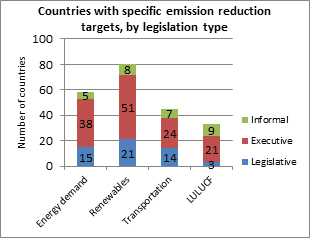
41 of them have economy-wide targets up to 2020, and 22 have targets beyond 2020.
86 countries have specific targets (for renewable energy, energy demand, transportation or LULUCF). 80 per cent of countries have renewable targets; the majority of them are executive policies.
Adaptation: half of the study countries have only minimal climate change risk assessments
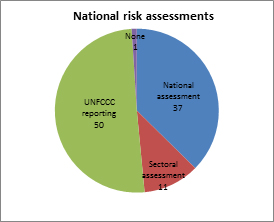
Most of these countries are non-annex I countries, which include some of the most vulnerable countries to climate change.
48 countries have dedicated institutionalized adaptation processes at the national or the sectoral level.

